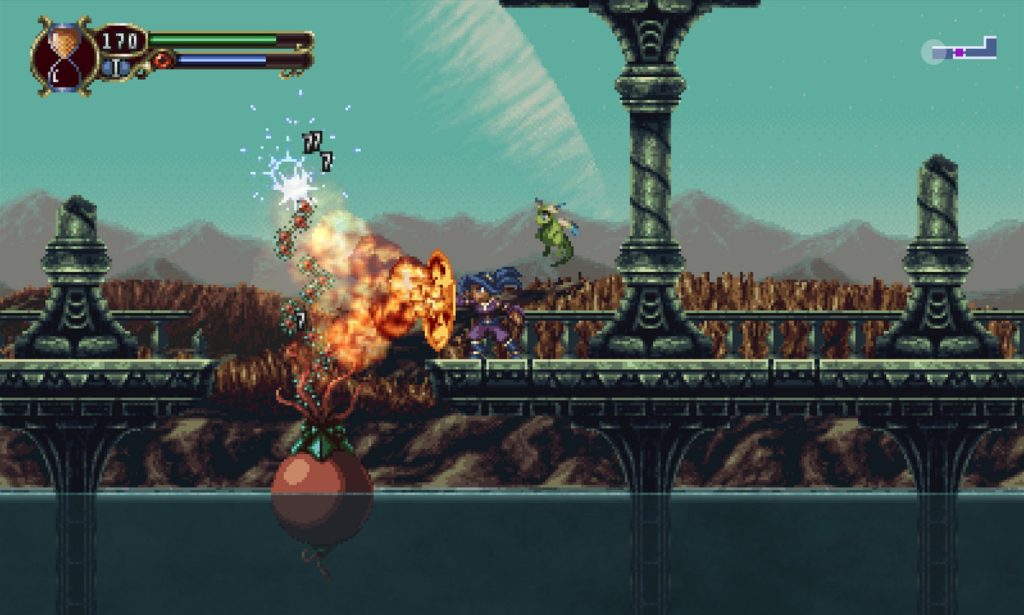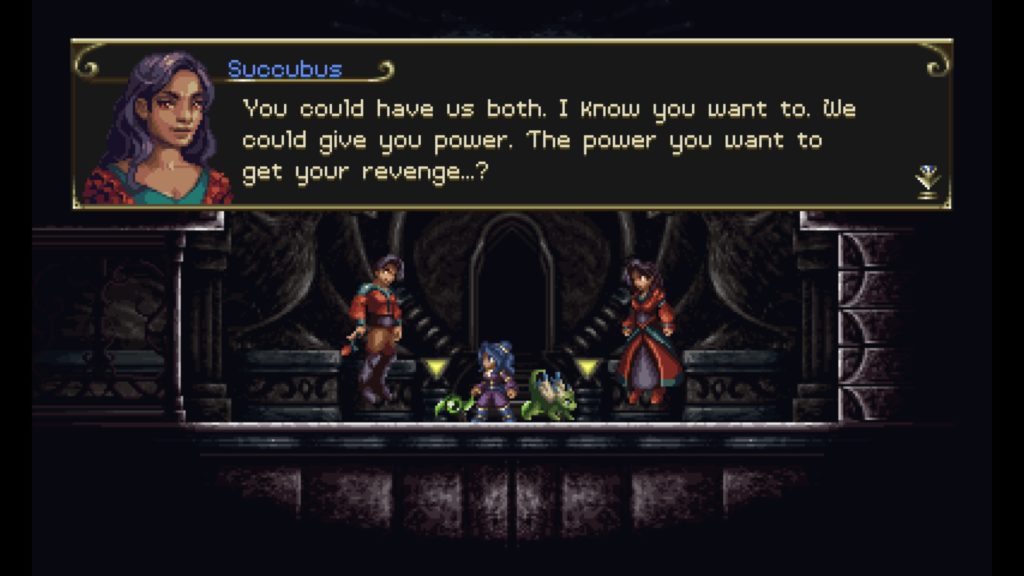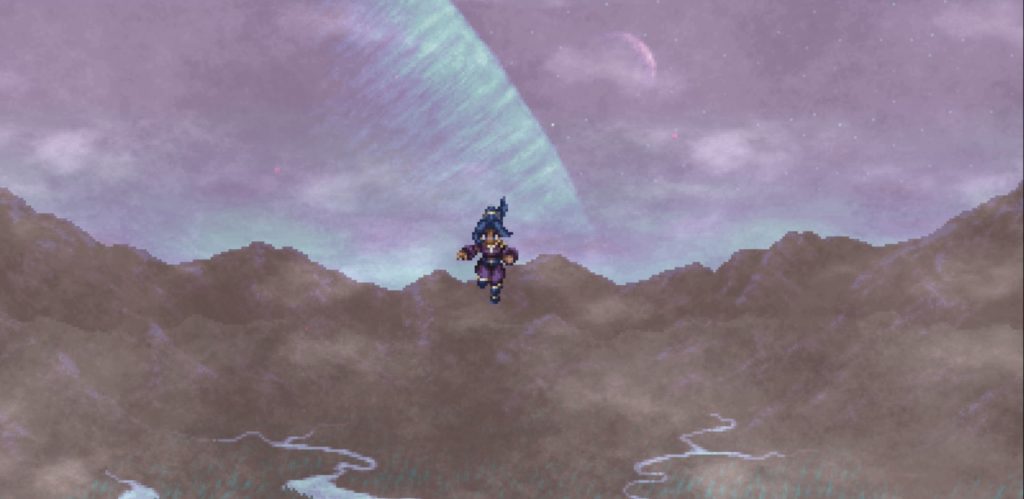
I’ve played a lot of Metroid-style games in my time. Ever since Metroid and Super Metroid, the occasional game has come along that utilized that same basic adventuring style, often with spectacular results. Most notably, games like Castlevania: Symphony of the Night (spawning the reviled term ‘Metroidvania’…ugh!) and more recently, games such as the jaw-droppingly good Axiom Verge from Thomas Happ and the crisp and refreshing Iconoclasts by Joakim Sandberg. Interspersed within are many other examples and derivations of the genre: The Mummy Demastered, Rogue Legacy, Salt and Sanctuary, Dead Cells, and so very many more. Suffice it to say the exploratory Metroid style of gameplay has been done to death. That being said, Timespinner is actually something new, fresh, and exciting. Timespinner is the first game from Lunar Ray Games, a new indie studio funded by Kickstarter way back in 2014. Well, with some publishing help from our Stardew Valley friends over at Chucklefish, the day has finally arrived for Timespinner. And let me tell you, it was worth the wait.
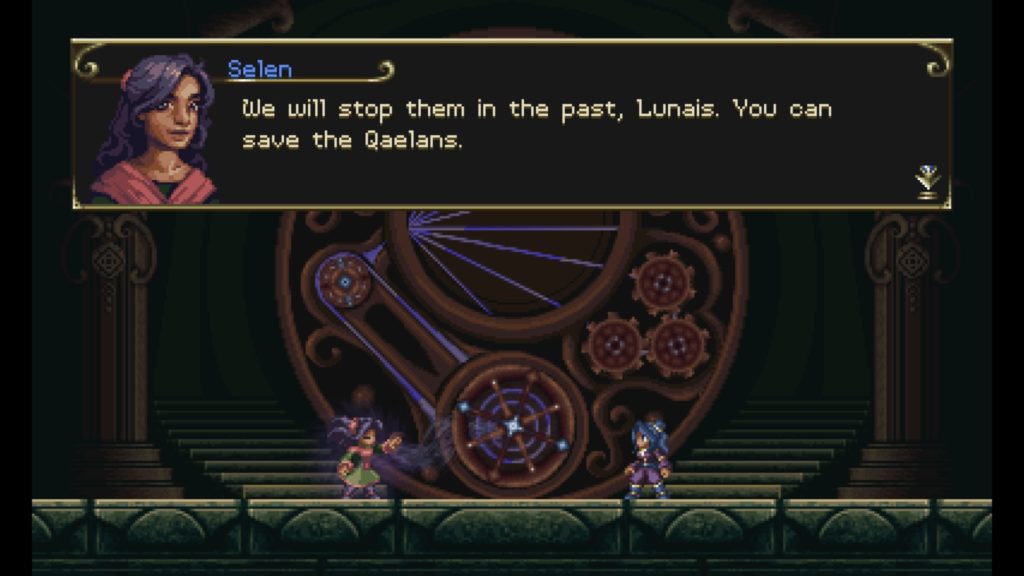
Timespinner tells the tale of Lunais, a timekeeper for her village. It seems that the evil Lachiem Empire has ravaged Lunais’ planet and their timekeepers have barely been keeping their people alive, mostly by traveling back in time, removing themselves from their previous timelines forever, and barely managing to survive day to day. It’s actually kind of reminiscent of the X-Men: Days of Future Past introductory movie sequence, but honestly, better written. Naturally all hell breaks loose and as Lunais, you’ve got to pick up the pieces. I don’t actually want to ruin the plot here, but at the same time, trust me when I say you’ve barely scratched the surface.
And that’s what’s most compelling about Timespinner, the story. It’s easily one of the best stories I’ve seen in an indie title in quite some time, including some of the most successful ones. It’s creative, well-told, well-written, fleshed out thoroughly, and most of all, compelling. You want Lunais to succeed, and as she slowly puts the pieces together over multiple eras, you realize along with her that things just aren’t as simple as they look. In a way, the whole game feels like a bit of an allegory for the way both media and social media only tell us certain parts of a story and thereby control how we see situations and feel about them. Perhaps I’m reading too much into it, but perhaps not. Either way, nothing is quite what it seems in Timespinner, and it’s utterly fascinating!
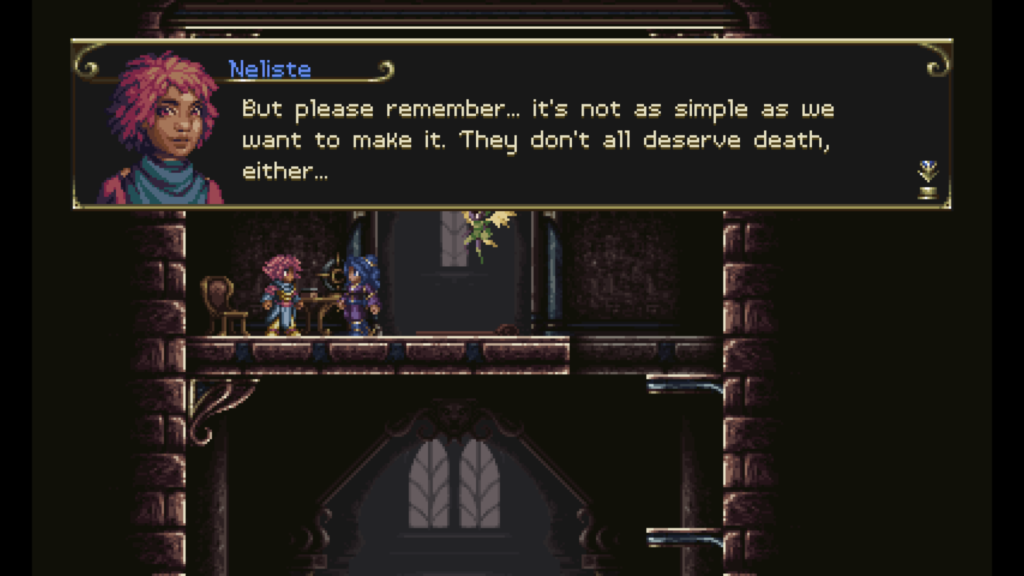
However there’s more to a game than just story. After all, what would a game be without gameplay? Timespinner plays much like any other standard Metroid-patterned game, slowly unlocking new weapons and upgrades as you backtrack here and there across the map to find new areas. You have a HUD map in the top right corner, and a life bar, energy bar, and hourglass on the left. There are some interesting weaponry and gameplay choices in Timespinner, and the main one is control of time itself. You can’t rewind time like the Prince of Persia, but you can literally pause time, much like that obscure late 80s sitcom, Out of This World (so very terrible). Conveniently, when you pause time, you can actually climb up on enemies like they were platforms, allowing you to access otherwise inaccessible areas and slightly penalizing you for slaughtering all the enemies onscreen without at least thinking about it first. Don’t worry, if you leave the room and come back, everything respawns so that you’re not completely out of luck.
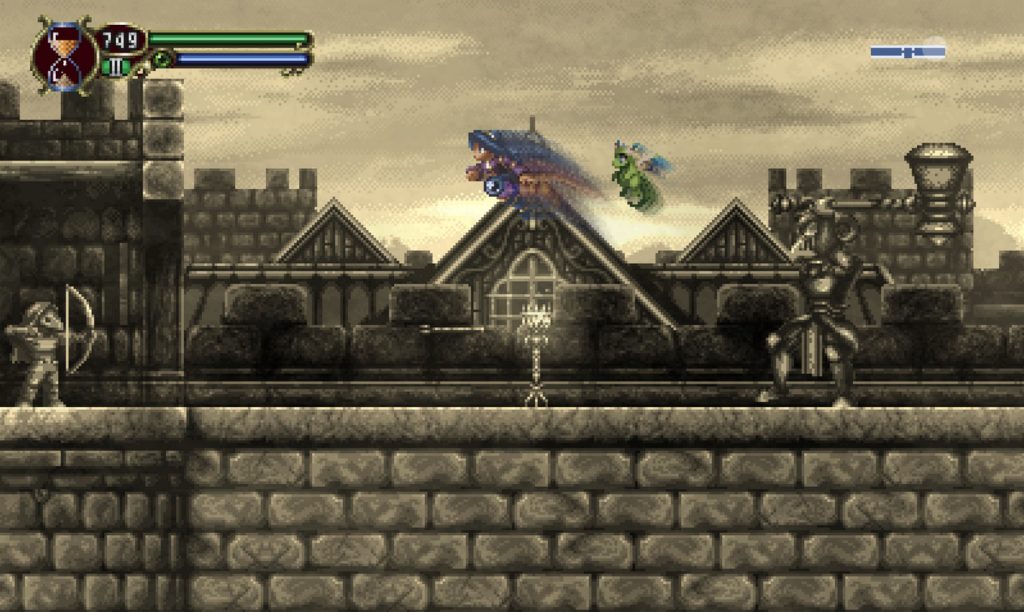
In addition to the time pausing element, you have magic as well, which is pretty neat in a literally interplanetary epic story. You control a variety of magic orbs which allow you to attack enemies from a bit of a distance, depending on the orb. Fire, blade, iron and many more orbs will be at your beck and call, allowing you to mix and match powers to best suit your situation. You can even switch them out with a hotkey at any time, as the game allows for up to three inventory presets. But wait, there’s more! Now how much would you pay? If orbs weren’t enough, you also begin to collect jewelry that gives you a variety of power attacks using your energy bar, and a handful of familiars who assist you in attacking the myriad of foes that assail you across the breadth and width of Lachiem. In short, there’s a lot going on! None of these elements seem stale however, and as you slowly gain power, the game continues to feel fresh.
The mechanics of combat are fairly straightforward. Hack, slash, and generally slaughter your way through everything in your path, be it a tiny slime or a giant Griffon. In terms of control, the game is fairly responsive. Timespinner isn’t as precise as I’d like it to be, but the interface gets the job done, especially if you’re using an Xbox One controller on the PC, which the game supports natively. The controller mapping is excellent and intuitive, and it’s obvious that Timespinner was designed with a controller in mind. While controls are overall slightly floaty, the enemies are also fairly forgiving, at least in Normal mode. Hard difficulty might be another story, but I didn’t give it a spin this time around.
Graphically, Timespinner is in many ways, gorgeous. It’s a beautiful homage to classic 16 bit gaming. Rich, pixel artwork with a noticeably personal style abounds. The game is an obvious homage to Super Nintendo style artwork, but manages to sneak in a few graphical details that you’d never see in an SNES game, little tweaks and things like smoke that show that it’s a 2018 release. What it doesn’t manage to do however, is look as good as I’d like it too in full screen mode at 1920 x 1080. While Timespinner is a spectacular looking game that oozes character, the pixels are large and the game isn’t done quite as much justice as I’d like in full screen mode. In addition, a surprising amount of screen tearing occurs in the backgrounds, particularly at the top third of the screen when travelling non-stop across a longer room or area. I found this moderately distracting from an otherwise engaging and immersive environment.
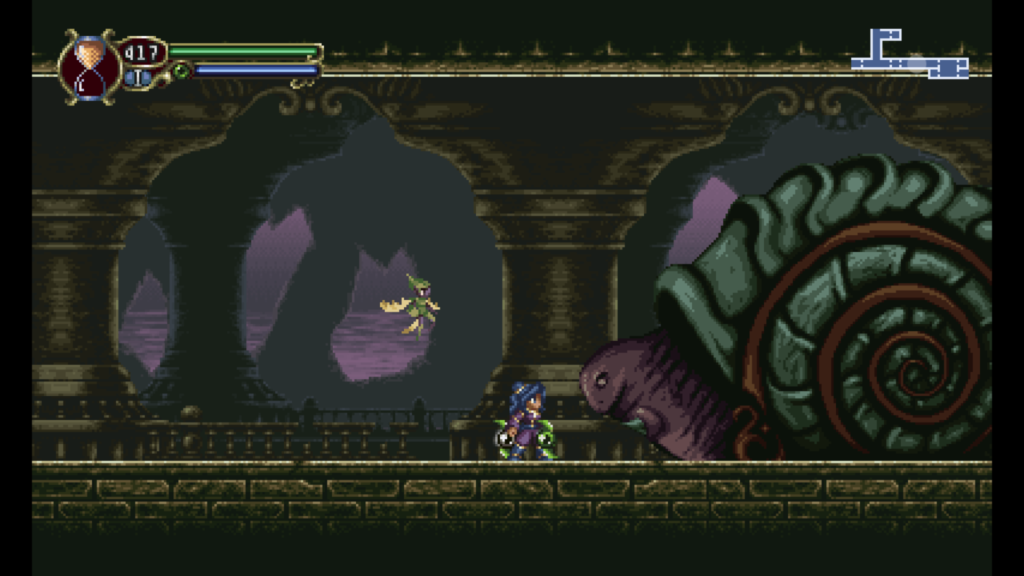
From an audio standpoint, there’s not much wrong with Timespinner either. Some of the music is delightful, while some becomes repetitive as you reenter areas repeatedly. There’s not much of a surprise there with a Metroid-style game, as any game can only manage so well when you’re constantly back and forth in the same spots. The best I can say is that it didn’t get irritating and music tended to fade into the background the longer I played. I didn’t rush out to download the soundtrack like I did with Axiom Verge, but I didn’t have any issues with it either.
In looking at Timespinner, I was consistently drawn back into the story, with facts, memories, and biographical information painting a mental picture of the characters in the game. This is by far the most outstanding part of Timespinner. It simply creates a vivid, compelling world that makes you want to know what happens next. I could barely put the game down once I got going into the story, and with slightly above average gameplay and solid but noticeably indie graphics, that’s saying something. Storyline is something that most contenders in the Metroid genre are sorely lacking, and the writer for Timespinner could easily move on to an AAA studio at any time. I kind of wish they’d written Mass Effect: Andromeda, to be honest…but hey, who doesn’t want that game scrapped? If you’re looking for a mindless Metroid-style game to wander about in, Timespinner will be playable but nothing special. But if you’re looking for a real plot with solid characters where you feel like you’re actually accomplishing something, not just mindlessliy fetching things, this is definitely the game for you, especially at only $20. Don’t miss out! Timespinner is most certainly a sleeper hit in the making!
This review was based on a retail version of Timespinner supplied by the publisher, running on an an I7-8700K with 16 GB of DDR4-3000 RAM, an Asus GeForce GTX 1080 ROG Strix graphics card, and an Xbox One controller connected via USB.


